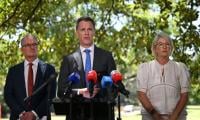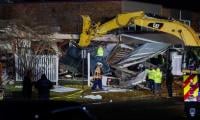In this world of Big Data, satellite imaging, data analytics and predictive analysis, it is a pity that policymakers have to make decisions based on guesstimates or incomplete information as timely, reliable, and updated data on key economic variables is not readily available.
The exceptions are the Population Census of the Pakistan Bureau of Statistics (although held after 18 years, there was some controversy about Sindh data), the National Socioeconomic Registry of Ehsaas, the identity data of NADRA, the price data of the PBS, balance of payments and monetary aggregates of the SBP, public debt of the EAD and MOF, telecom data of the PTA, and tax collection of the FBR.
The success story of the National Command Operation Center (NCOC) is an excellent example of data and evidence based decision-making in combatting the Covid-19 pandemic. The most deficient area is the data on real sectors of the economy (agriculture, industry and services) that is stale and outdated, collected in an ad-hoc manner and is inconsistent with other proxy variables.
In most countries, the national accounts are revised at intervals of five years or so. GDP at current and constant factor prices in Pakistan is still derived from the 2005-06 base, for which some of the surveys were carried out several years before the base year. The 2015-16 rebasing exercise has been completed for quite some time and is in danger of becoming redundant because of new capacity, new activities and new sectors that have emerged since these surveys were undertaken. Rebasing and extrapolation to the current year would show a substantial increase in the size of the economy, and per capita income providing a more realistic picture. Of course, the result of the rebasing is likely to lead to uproar by certain quarters as it would show decline in debt, fiscal and current account deficits/ GDP ratios and a lowering of tax, imports and exports ratios etc relative to GDP. The present ratios are misleading and do not guide policymakers in taking the right remedial actions.
In the fast moving world of today, we need high frequency indicators to guide us. Therefore, in addition to the rebasing of national accounts we need quarterly series along with the annual, which India has been producing for quite some years. The process of appraisal and approval of the data series produced by the Pakistan Bureau of Statistics has become too bureaucratic and time consuming and needs to be streamlined. As the provinces have become relatively more important units of economic transactions, we should publish Gross Provincial Product data regularly. All the estimates floating around (including those which I have used myself) deploy different assumptions in assigning the weights of sectoral value added to different provinces.
The last economic census was held from April 2003 to December 2003 and published in 2005, agriculture census in 2010, and livestock census in 2006. These censuses are critical in estimating the intercensal growth rates and also updating the samples for surveys from which the sectoral estimates for agriculture, livestock, micro, small and medium enterprises are derived. The Mouza Census was conducted in 2020 but its findings are still awaited. How can we have any confidence in the reliability of the present estimates when the underlying universe has changed significantly during this period, adding new economic activities while others may have disappeared from the scene? In addition, there is no unified national data center where various databases can be integrated, and thus there is too much fragmentation and very little aggregation across the silos. .
Let me give one specific example of the unreliability and inaccuracy of the present data. The Quantum Index of Large Scale Manufacturing (QIM) with 2005-06 as base year gives a weight to textiles of 20.9 percent (Yarn 13.7 and cloth 7.2). If we examine the exports of textiles, the value added textiles (non-yarn and non-cloth) form almost 80 percent of the total textile exports. All the large exporting houses producing value added goods are not reflected in this weightage for LSM. So the critics rightly point out as to how exports are growing when the yarn and cloth output are declining.
The QIM is constructed in an ad-hoc manner by combining the data from the Oil Companies Advisory Committee (11 items), the Ministry of Industries and Production (36 items), and the Provincial Bureaus (65 items) reporting changes on a monthly basis in the components of the index. Not only is the methodology questionable, the coverage is also incomplete and inaccurate. The provincial bureaus – except Punjab – do not have the capacity to collect the primary information and therefore rely on the industry sources (which usually understate production to evade taxes) or secondary data.
Any correlations with the usage of inputs or electricity or gas consumption are not attempted to verify the authenticity and whatever raw data is reported goes into the index unvarnished. Decisions on export or imports of sugar were made on the basis of the production data provided by the sugar millers which subsequently was found to be erroneous. The same is the case with cement, fertilisers, automobiles etc output data that is included without validation or independent verification.
The last Census of Manufacturing Industries (CMI) which was used in the National Accounts and QMI was that of 2005-06. CMI 2015-16 was completed a few years ago and my information about Punjab shows there is quantum jump in the index compared to what we are using at present. The PBS and the Planning Commission should have made the switch but it hasn’t been done so far. This would affect our national accounts and the industry sector but also the services sector whose value added is dependent on the quantum of commodity producing sectors.
The ECC had taken decisions on imports and exports of wheat, and sugar based on the crop reporting system of the provincial governments and Household Income and Expenditure Survey data but both the production and consumption data kept on changing from one meeting to the other as reported in the media. If the PBS can do a fine job in rebasing, expanding coverage and providing urban and rural price indices separately of the price statistics and decision support system, it is puzzling as to why this cannot be done in the case of the National Accounts, Labour Survey, Pakistan Living Standards Measurement
The agenda on which the PBS should work in the near term is: one, announce the results of rebasing of National Accounts 2015-16 and extend the series to date keeping the old series in parallel for one year. Two, hold or complete a new economic census, agriculture census, livestock census. Three, release the results of the Census of Manufacturing Industries CMI 2015-16 immediately and the QIM reconfigured its findings. Four, publish Quarterly National Accounts and Gross Provincial Products accounts regularly. Five, redesign and carry out a labour survey data including nominal and real wages every year and its methodology, coverage and definitions brought in line with the regional countries. Six, the PSLM Survey data /HIES show a lot of gap in income and expenditure compared to National Accounts. Their design, sample size and coverage may be revisited.















